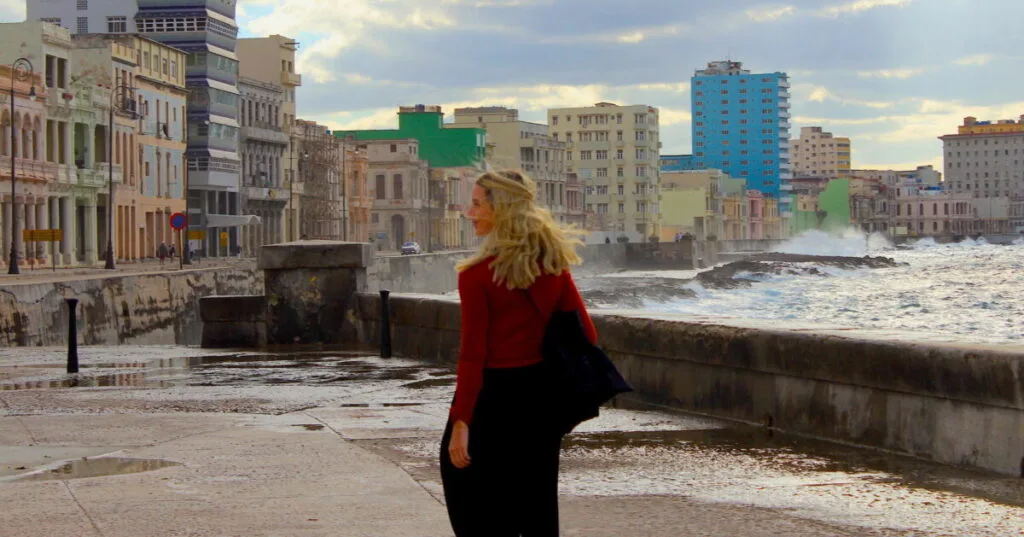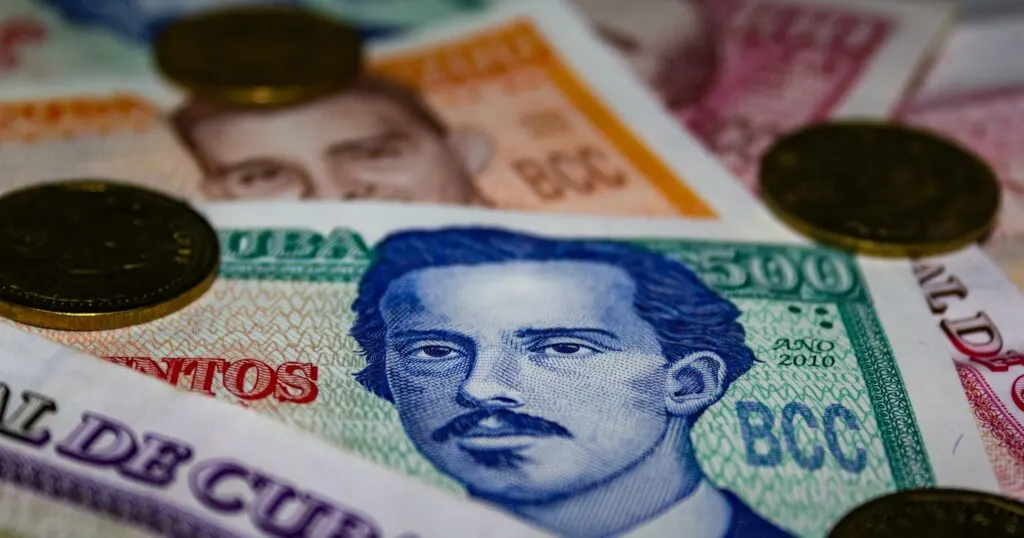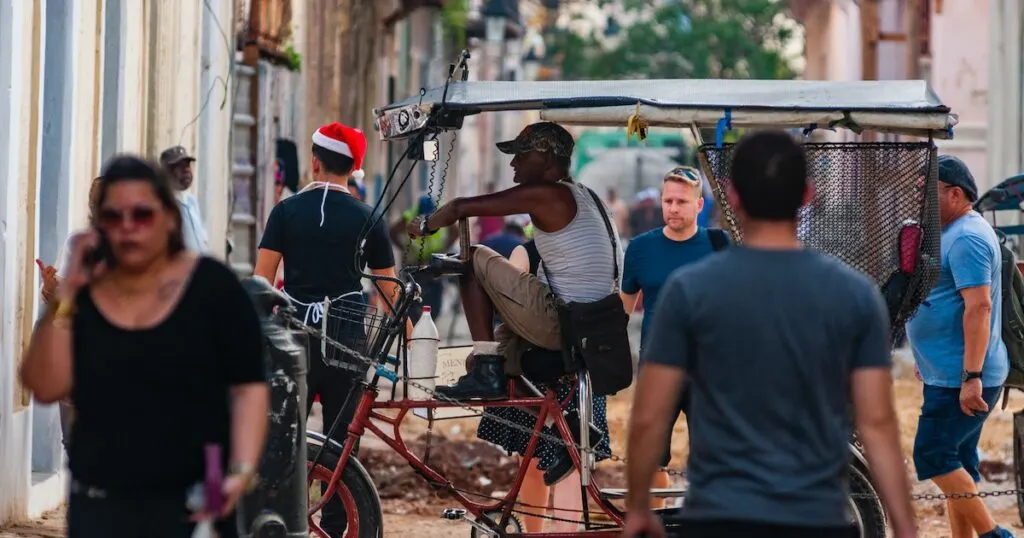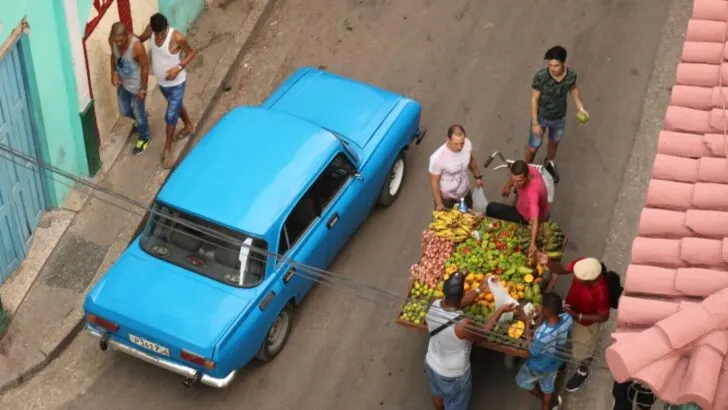Wondering what currency to take to Cuba? Cash should be at the very top of your Cuba packing list.
There are many incredible sights around Cuba, from Havana’s boulevards to white-sand beaches and national parks. However, if you don’t have the correct currency, you won’t be able to get anywhere.
The first thing you need to know about bringing money to Cuba is that you need multiple currencies. The best money for Cuba is a mixture of Cuban National Peso (CUP) and Euros (EUR), as I will explain in more detail. I will also discuss ATM availability and exchange rates.
For other practical advice, check out my guide to getting around Cuba and the best dress code in Cuba.
Disclosure: This post includes affiliate links. If you decide to click through and make a qualifying purchase, I will receive a small commission at no extra cost to you – thanks for your support.
What Currency to Bring to Cuba

The official currency in Cuba is the Cuban National Peso (CUP). This is different to the Cuban Convertible Peso (CUC), which is no longer a legal currency in Cuba.
You can’t buy CUP before you arrive in Cuba because it is a closed currency. Therefore, you must exchange another currency for CUP when you arrive in Cuba.
Watch out for unofficial ‘money changers’ who may exchange your euros for CUC instead of CUP.
CUP isn’t the only currency you need to get around Cuba, however. You will also need EUR. This is because certain larger transactions such as paying for accommodation or city-to-city taxi rides must be paid for in EUR.
These are the currencies accepted in Cuba and what they are used for:
Cuban National Peso (CUP): CUP is the primary currency. It is used to pay for food and drink in restaurants and bars, short inter-city taxi rides, tips and inexpensive tourist activities such as watersports equipment rental.
Euros (EUR): EUR is used to pay for accommodation (including meals consumed at your accommodation), out-of-city taxi rides, bus journeys (including the hop-on hop-off bus to the beach in Havana), high-end restaurants and tourist activities such as classic car rides or organised excursions.
US dollars (USD): USD is often asked for instead of EUR. However, it is on the so-called black market, and I recommend using EUR only.
Other currencies: Depending on your haggling skills and fluency in Spanish, you may (emphasis on may) be able to pay for big transactions in another strong foreign currency such as British pounds (GBP). I managed this on several occasions. However, this should be a last resort and you may not be successful.
Money For Cuba: Exchanging Foreign Currency Into Cuban Pesos (CUP)

CUP
Now that you’re aware of the main currencies used in Cuba, you need to know how to exchange EUR into CUP.
When you arrive in Havana, you’ll notice that there are floods of locals asking, “Exchange the money?” Try to avoid changing your money with any people you don’t know. It’s best to exchange your money at your hotel.
Hotels accept EUR to CUP conversions. Some will also exchange strong currencies such as the British Pound (GBP), Canadian Dollar (CAD), Swiss Franc (CHF), Japanese Yen (JPY) and Mexican Peso (MXN). However, you should double-check directly with your accommodation before you arrive which currencies they accept.
What is a good exchange rate?
A good exchange rate in Havana is around 80 CUP to 1 EUR.
The further you travel from tourist hotspots such as Havana and Varadero, the better the exchange rate.
Is it safe to exchange money on the street in Cuba?

Exchanging money on the street has its risks. Wherever possible, you should exchange your money at your accommodation.
If you do decide to exchange money on the street, exercise caution and check for forged or damaged notes. Also double-check that you have received CUP, not CUC.
Accessing ATMs in Cuba

There are ATMs in Cuba. However, it is a bad idea to take large sums of CUP out of ATMs in Cuba.
The government enforces a strict exchange rate. Therefore, if you have calculated the conversion online, you will find that your conversion rate is far worse. You will lose money in the conversion process, and banks also charge a small commission fee.
ATMs are mainly located in bigger cities or towns such as Havana, Trinidad, Varadero, and Cienfuegos. However, successfully withdrawing cash from an ATM in Cuba is a matter of luck.
Some days the ATMs work. Some days, they are out of money. I learnt the hard way.
If you do need to find an ATM, head towards the main street, bank or tourist area. You can ask at local hotels and homestays for directions if you have trouble locating an ATM.
Money for Cuba: How Much Currency to Take to Cuba

Swimming at the Parque Guanayara Waterfalls in Topes De Collantes, near Trinidad
The amount of money you should bring to Cuba depends upon your budget, the length of your trip, and what kind of activities you have planned.
Cuba is largely a cash-only country. Therefore, because you may encounter difficulties withdrawing money once in Cuba, you should bring enough cash to cover all of your spending, including food, transport and accommodation.
The biggest chunk of your cash is likely to go on accommodation, transport, and eating out. It’s difficult to save money by cooking in Cuba because the majority of the grocery stores in Cuba sell limited items such as water, alcohol, tinned tomatoes, beans, and other canned foods.
I suggest exchanging around 30 – 40% of your cash into CUP and keeping 60 – 70% in EUR to spend it on transport, hotels and expensive excursions.
Here’s an idea of what you might spend in Cuba:
Accommodation: 10 – 30 EUR per night.
Transport: 50 – 200 EUR per week
Food: 350 – 1,000 CUP per meal
On Hostelworld, there are a few cheap hostels in Havana and other bigger destinations. Hotels are more expensive. Casas (Cuban homestays) typically cost the least.
The price of eating out varies depending upon your location and the calibre of the restaurant. If you’re mindful of your budget and eat mainly at basic restaurants, a basic meal (such as rice and chicken, or rice and fish) should cost between approximately 350 – 700 CUP per person.
Alcoholic drinks typically cost 100 – 250 CUP per drink.
A meal at a higher-end or Western-style restaurant costs 500 – 1500 CUP per person.
Money for Cuba: Can I use my credit card in Cuba?
Credit, debit cards, or pre-paid travel cards can be used to pay for transactions in grocery stores or to withdraw money from ATMs. This is under the condition that they were not issued by an American bank or one of their subsidiaries. American Express, for example, does not work in Cuba.
Occasionally, you may be required to pay by card for things like the hop-on and hop-off bus in Havana.
That being said, Cuba is primarily a cash-only country so you should bring enough money to cover your trip.
Suggested Reading
- Complete Cuba packing list + TIPS
- The Best Beaches Havana
- 10 Best Things to Do in Trinidad Cuba
- Guide to Topes de Collantes Cuba: Offbeat waterfalls and hikes near Trinidad!
- Getting Around Cuba Guide
- Parque Guanayara Waterfalls Guide
FAQ
What is the best currency to take to Cuba?
The best currency to take to Cuba is Euros (EUR). EUR can be used to pay for accommodation, transport and tourist activities or excursions. It can also be exchanged for Cuban National Peso (CUP), which must be used to pay for meals or drinks in restaurants and bars, taxi rides and inexpensive tourist activities.
How can I avoid scams and tell apart Cuban National Peso from Cuban Convertible Peso?
All Cuban National Peso (CUP) banknotes have faces rather than pictures of monuments.
What currency do Cuban grocery stores accept?
Cuban grocery stores accept debit or credit cards only. The card must not be associated with an American bank.


Robert
Tuesday 31st of October 2023
I am going to HAvana Cuba to paint oil paintings Are there art stores or hardware paint stores that sell turpentine and mineral sprirts